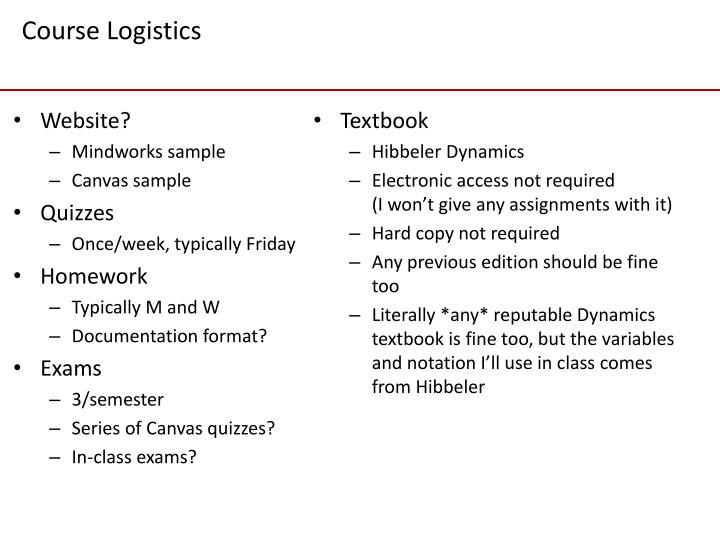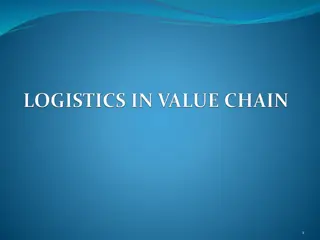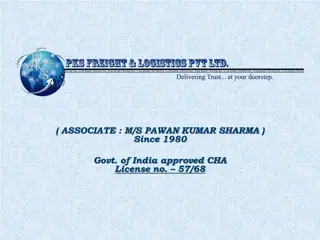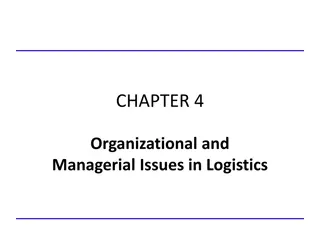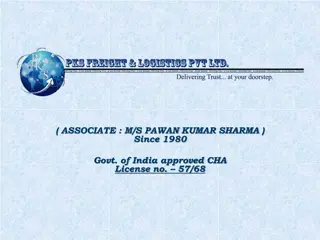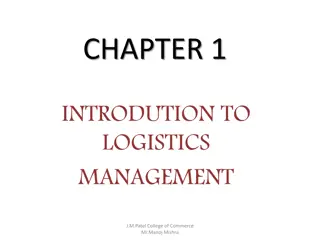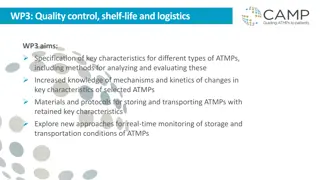Course Logistics
Dive into the course logistics for ENGR 220 Dynamics, including information on website usage, weekly quizzes, homework schedule, exams, and the recommended textbook. Explore pre-reading questions, chapter details, and problem-solving methodologies for dynamics problems.
Download Presentation

Please find below an Image/Link to download the presentation.
The content on the website is provided AS IS for your information and personal use only. It may not be sold, licensed, or shared on other websites without obtaining consent from the author.If you encounter any issues during the download, it is possible that the publisher has removed the file from their server.
You are allowed to download the files provided on this website for personal or commercial use, subject to the condition that they are used lawfully. All files are the property of their respective owners.
The content on the website is provided AS IS for your information and personal use only. It may not be sold, licensed, or shared on other websites without obtaining consent from the author.
E N D
Presentation Transcript
Course Logistics Website? Mindworks sample Canvas sample Quizzes Once/week, typically Friday Homework Typically M and W Documentation format? Exams 3/semester Series of Canvas quizzes? In-class exams? Textbook Hibbeler Dynamics Electronic access not required (I won t give any assignments with it) Hard copy not required Any previous edition should be fine too Literally *any* reputable Dynamics textbook is fine too, but the variables and notation I ll use in class comes from Hibbeler
Pre-Reading Questions/Comments/Discussion Section 12.1 How are kinematics and kinetics different from each other? Which steps of the problem solving methodology are hardest for you? Why? Section 12.2 Why is 's' used as a variable for rectilinear motion? How is this different from something like x ? What are the relationships (in words) between position, velocity, and acceleration? What are the relationships (in equations) between position, velocity, and acceleration? Why is it important to note if a variable is a scaler vs. a vector? Where have you seen the three equations for a = a_c before? Can you follow the thought process used to solve example problems 12-1 through 12-5? How are the "Problem Solving" steps different and similar to the "Procedure for Analysis" steps?
ENGR 220: Dynamics Chapter 12 Kinematics of a Particle Chapter 13 Kinetics of a Particle: Force and Acceleration Chapter 14 Kinetics of a Particle: Work and Energy Chapter 15 Kinetics of a Particle: Impulse and Momentum Chapter 16 Planar Kinematics of a Rigid Body Chapter 17 Planar Kinetics of a Rigid Body: Force and Acceleration
12.1 Introduction MECHANICS STATICS DYNAMICS (objects in equilibrium) (objects in motion) KINETICS KINEMATICS (geometric aspects of motion) (analysis of forces causing motion)
12.1 Problem-Solving Methodology for Solving Dynamics Problems: 1. Read problem and try to understand what physical phenomenon is taking place. Dr. Dan Pro Tip: Make an educated guess of the answer 2. Draw a diagram of what is happening in the problem. How to you draw something that is moving? A single coordinate axis, s, defines the location of a particle. 3. Establish a coordinate system and write out appropriate equations in that system. Can do most problems in any coordinate system (some are easier) 4. Solve the equations algebraically, paying attention to units used. Report reasonable sig. fig. This is your boxed answer 5. Take some time to think about your answer. Is it reasonable? How does it compare to your guess after Step 1? 6. Figure out if there is an alternative way to check or validate that this answer is somewhat realistic. Hint: Yes, there is. Figure out a way to be confident in your answer
12.2 Rectilinear Kinematics: Continuous Motion One-dimensional motion. A particle s position, velocity, and acceleration define its kinematic state. Rectilinear Kinematics: A particle is an idealization of a body where mass is concentrated at a point. A particle has mass but negligible size and shape. A particle has location but not rotation. A single coordinate axis, s, defines the location of a particle. Position: Displacement: Change in position. s s = ' s
12.2 Rectilinear Kinematics: Continuous Motion Velocity: Change in position. change in position change in time s t s t = = avg v average velocity: = li m v instantaneous velocity: 0 t ds dt common units: in/s, ft/s, m/s ( ) = EQ 12 1 - v instantaneous velocity is the time derivative of position Acceleration: Change in velocity. change in velocity change in time v t v t = = a average acceleration: avg = lim t dv dt a instantaneous acceleration: 0 common units: in/s2, ft/s2, m/s2 ( ) = EQ 12- 2 a instantaneous acceleration is the time derivative of velocity
12.2 Rectilinear Kinematics: Continuous Motion ( ) , , s s s Position, Velocity, Acceleration: ds dt ds v ( ) = = EQ 12-1 v dt instantaneous velocity: dv dt dv a ( ) = = EQ 12-2 a dt Instantaneous acceleration: ds v dv a = ads vdv = (EQ 12-3 ) The resulting differential relationship excludes differential time (dt)
12.2 Rectilinear Kinematics: Continuous Motion a a = Special Case: Constant Acceleration c = v v = = Integrate , assuming when 0 a dv dt t Velocity as a Function of Time: 0 c v t ( ) v v = + = EQ 12- 4 dv a dt a t 0 c c 0 v 0 Position as a Function of Time: v ds dt v = = + s s = = Integrate , assuming when 0 a t t 0 0 c s t ( ) ( ) + s s = + + 1 2 = EQ 1 2-5 ds v a t dt v t a t 2 0 0 0 c c 0 s 0 vdv a ds = v v = s s = Integrate , assuming when Velocity as a Function of Position: 0 0 c v s ( ) ( ) = + = 2 EQ 12-6 vdv a ds v v a s s 2 2 0 0 c c v s 0 0
Example Problems For each problem, feel free to work/chat with those around you on: 1. What s happening in this problem? Any key words in the problem statement? 2. What are the relevant dynamics concept(s)? 3. What equation(s) to use? 4. Write out the equation(s) and determine if you know how to solve them. 5. If you have time, do the algebra/calculus. A single coordinate axis, s, defines the location of a particle. The goal here is to put the thinking on display, and identify where any sticking point might be, and how to work through them. What you want to clarify during example problems are things like: Why did you do that? How did you know to do that? When is it okay to do that? Is there a different way to get to a correct answer?
1. Whats happening? Key words, and what are their implications? 2. Dynamics concept(s)? 3. Equation(s)? 4. Do you know how to solve them? 5. Prove it!
Have a(t), and want v(t) Have v(t), and want s(t)
1. Whats happening? Key words, and what are their implications? 2. Dynamics concept(s)? 3. Equation(s)? 4. Do you know how to solve them? 5. Prove it!
1. Whats happening? Key words? 2. Dynamics concept(s)? 3. Equation(s)? 4. Do you know how to solve them? 5. Prove it! Hint: Define a single coordinate system for both cars. Wherever you decide s = 0, use that point for car A and B. This means the initial position of car B is going to be d more than car A.
Some assumptions: Point A is the nose of Car A Point B is the tail of Car B The origin (s=0) is at Car A when time = 0. Distance Car A moved before hitting the brakes Position of Car B as a function of time Position of Car A as a function of time
